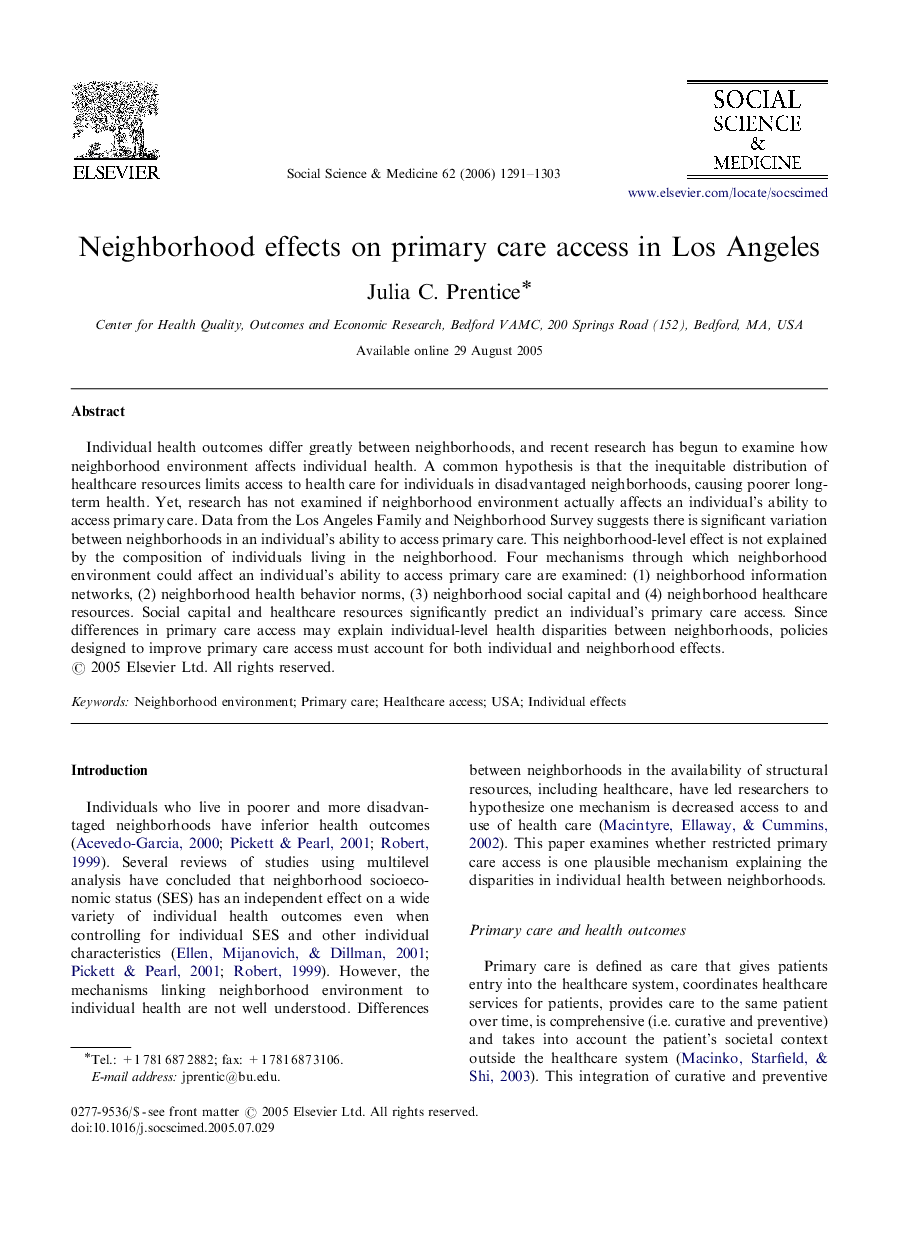| کد مقاله | کد نشریه | سال انتشار | مقاله انگلیسی | نسخه تمام متن |
|---|---|---|---|---|
| 954389 | 927641 | 2006 | 13 صفحه PDF | دانلود رایگان |

Individual health outcomes differ greatly between neighborhoods, and recent research has begun to examine how neighborhood environment affects individual health. A common hypothesis is that the inequitable distribution of healthcare resources limits access to health care for individuals in disadvantaged neighborhoods, causing poorer long-term health. Yet, research has not examined if neighborhood environment actually affects an individual's ability to access primary care. Data from the Los Angeles Family and Neighborhood Survey suggests there is significant variation between neighborhoods in an individual's ability to access primary care. This neighborhood-level effect is not explained by the composition of individuals living in the neighborhood. Four mechanisms through which neighborhood environment could affect an individual's ability to access primary care are examined: (1) neighborhood information networks, (2) neighborhood health behavior norms, (3) neighborhood social capital and (4) neighborhood healthcare resources. Social capital and healthcare resources significantly predict an individual's primary care access. Since differences in primary care access may explain individual-level health disparities between neighborhoods, policies designed to improve primary care access must account for both individual and neighborhood effects.
Journal: Social Science & Medicine - Volume 62, Issue 5, March 2006, Pages 1291–1303